Polyporus umbellatus
Scientific name: Polyporus umbellatus (Pers.) Fr.
Derivation of name: Polyporus means "many pored."
Umbellatus means "with umbrellas."
Synonymy: Grifola umbellata (Pers.) Pilat;
Dendropolyporus umbellatus (Pers.)
Julich
Common names: Umbrella polypore.
Phylum: Basidiomycota
Order: Polyporales
Family: Polyporaceae
Occurrence on wood substrate: Parasitic and saprobic
on roots of hardwoods, buried wood;
appearing as
compound clusters
of numerous, circular caps -
fruiting on
the ground,
near
hardwood stumps, and trees;
May through October.
Dimensions: Overall size up to 50 cm wide; individual
caps 1-4 cm wide; basal stalk 2.5-7.5 cm long and
2-3 cm thick.
Upper surface: Caps are whitish to ochre to pale brown;
depressed in the center; dry, fibrous to smooth.
Pore surface: Whitish, becoming yellowish; decurrent;
pores 1-3 per
mm.
Comments: The thick basal stalk arises from a blackish,
buried sclerotium (tuber-like structure). The stalk becomes
richly branched above ground such that each cap is
centrally stalked. Fruitbodies may appear over many years
in the same location.
More information at MushroomExpert.com:
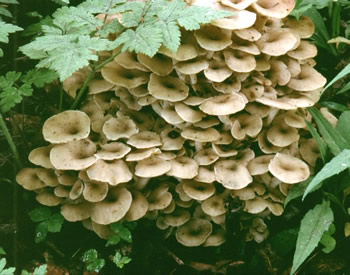
Figure 1. Polyporus umbellatus as it might appear on the
forest floor.
Photo © Steve Nelsen.
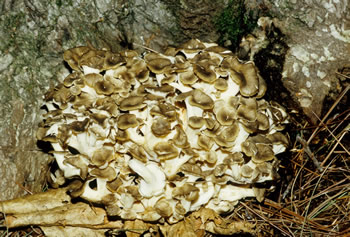
Figure 2. A young specimen of umbrella polypore. The
white stalks are easily visible between the
caps which are
not fully expanded.
Photo © John Plischke III.
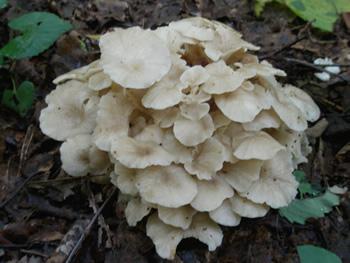
Figure 3. A specimen with caps lighter in color than the
specimens in Figures 1 and 2.
Although Polyporus
umbellatus appears
terrestrial, it is associated with wood -
usually attached to
the roots of a tree.Photo © Chris Snyder.
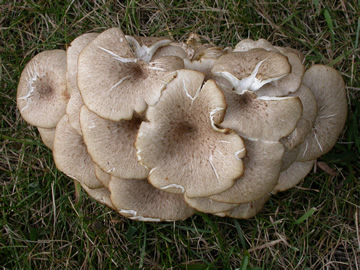
Figure 4.
This specimen, brought to the collection
tables at a
NEMF foray, was placed on the grass in order
to take the
picture. Note the depressed caps. Photo © Gary Emberger.

Figure 5. The underside of the specimen shown in Figure 4.
Photo © Gary Emberger.
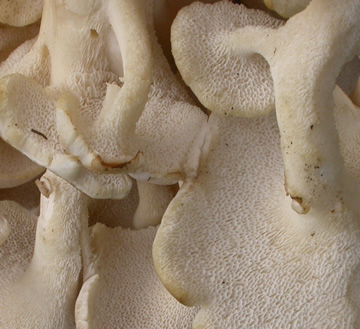
Figure 6. Each cap is centrally stipitate. The white
pores are
decurrent on the stalks. Photo © Gary Emberger.